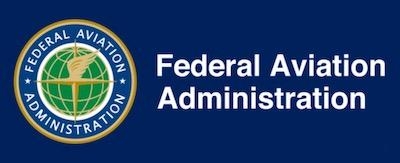Thu, Jun 16, 2022
NPRM... Aviation’s Most Terrifying Abbreviation
The FAA appears to be playing EPA's role and has released a proposed rule aimed at reducing greenhouse gasses emitted by large aircraft operating in U.S. airspace.

The rule would set new, more stringent fuel-efficiency standards for yet-to-be-certified subsonic jet aircraft and large turboprop and propeller aircraft, as well as new aircraft manufactured after 01 January 2028.
Examples of aircraft to which the proposed rule would apply include: Boeing’s nascent 777-X and future versions of the company’s 787 Dreamliner; Airbus’s A330-neo; business jets such as Cessna’s Citation and Gulfstream’s G600; and civil turboprop airplanes such as the ATR 72 and the Viking Limited Q400. The proposed rule does not apply to planes already in service.
The agency alleges Civil aircraft such as these were responsible for ten-percent of domestic transportation emissions and three-percent of total U.S. greenhouse gas emissions prior to the pandemic.
The proposed rule is part of the U.S. Aviation Climate Action Plan, which sets out to achieve net-zero greenhouse gas emissions from the U.S. aviation sector by 2050. During the past year, the FAA announced in excess of $100-million in matching research contracts to increase aircraft efficiency, reduce noise and aircraft emissions, and develop and implement new software to reduce taxi delays. These efforts build upon the Biden-Harris Administration’s Sustainable Aviation Fuels Grand Challenge.

The emission standard cited by the FAAs NPRM derives of a metric that equates fuel efficiency and consumption with reductions in carbon dioxide (CO2). The proposed rule also accommodates a wide variety of design measures by which more fuel-efficient aircraft might be produced. These include—and here the agency’s genius is instantiated—improvements to aerodynamics, engine propulsion efficiency, and reductions in aircraft mass.
The FAA’s proposal aligns with aircraft CO2 emission standards established by the United Nations’ International Civil Aviation Organization (ICAO) and with USEPA’s regulations implementing the ICAO standard. It therefore assures the worldwide acceptance of U.S. manufactured airplanes and airplane engines.
More News
Also: Vertical Flight Society, NBAA Maintenance Conference, GA Honored, AMT Scholarship For the first time, students from Embry-Riddle’s Daytona Beach, Florida, campus took t>[...]
Hazardous Weather Information Summary of significant meteorological information (SIGMET/WS), convective significant meteorological information (convective SIGMET/WST), urgent pilot>[...]
"The need for innovation at speed and scale is greater than ever. The X-62A VISTA is a crucial platform in our efforts to develop, test and integrate AI, as well as to establish AI>[...]
(FAA) Inspector Observed That Both Fuel Tanks Were Intact And That Only A Minimal Amount Of Fuel Remained In Each Analysis: According to the pilot, approximately 8 miles from the d>[...]
“Pyka’s Pelican Cargo is unlike any other UAS solution on the market for contested logistics. We assessed a number of leading capabilities and concluded that the Pelica>[...]
 Airborne-Flight Training 05.09.24: ERAU at AIAA, LIFT Diamond Buy, Epic A&P
Airborne-Flight Training 05.09.24: ERAU at AIAA, LIFT Diamond Buy, Epic A&P ANN's Daily Aero-Term (05.07.24): Hazardous Weather Information
ANN's Daily Aero-Term (05.07.24): Hazardous Weather Information Aero-News: Quote of the Day (05.07.24)
Aero-News: Quote of the Day (05.07.24) NTSB Final Report: Cessna 150
NTSB Final Report: Cessna 150 Aero-News: Quote of the Day (05.08.24)
Aero-News: Quote of the Day (05.08.24)




